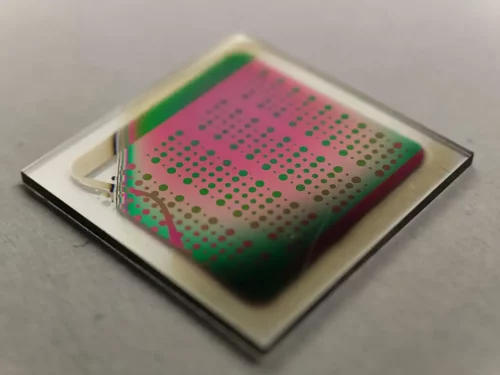Researchers at TU Wien have developed an oxygen-ion battery, offering features such as remarkable durability, the absence of rare elements, and a solution to fire hazards.

Despite being widely used in various applications, such as electric vehicles and smartphones, lithium-ion batteries are only sometimes the ideal choice for every situation.
Researchers at TU Wien have developed a durable oxygen-ion battery, a promising alternative to lithium-ion with a long lifespan and no irreversible capacity loss. Oxygen-ion batteries use abundant materials and non-combustible substances, eliminating the need for scarce elements. These batteries show great potential for large-scale energy storage systems, particularly for storing electricity generated from renewable sources.
Ceramic materials as a new solution
The team suggests exploring ceramic materials’ suitability for battery production based on fuel cell expertise. The ceramic materials can absorb and release doubly negatively charged oxygen ions. These ions migrate between ceramics by applying an electric voltage, generating an electric current. The researchers explain the ceramic battery’s similarity to lithium-ion batteries with key advantages: non-flammability, eliminating fire accidents, and avoiding expensive or environmentally harmful rare elements. Tobias Huber highlights the adaptability of ceramic materials, allowing easy substitution of challenging elements. The current prototype uses lanthanum but aims for cheaper alternatives. Notably, cobalt and nickel, common in batteries, are absent.
High life span
The new battery technology’s crucial advantage is its potential for an extended lifespan. The team explains that charge carriers eventually become immobile in conventional batteries, leading to decreased capacity and usability after multiple charging cycles. The oxygen-ion battery can easily regenerate oxygen from the surrounding air to compensate for any loss, distinguishing it from other batteries. Although it has lower energy density and operates at higher temperatures, it holds promise for energy storage applications.
The oxygen-ion battery is an excellent solution for large-scale energy storage, like solar or wind energy. In energy storage buildings, the battery’s long lifespan, absence of rare elements, and non-flammable nature are crucial, outweighing lower energy density and higher operating temperatures.
Reference : “Rechargeable Oxide Ion Batteries Based on Mixed Conducting Oxide Electrodes” by Alexander Schmid, Martin Krammer and Jürgen Fleig, 25 January 2023, Advanced Energy Materials. DOI: 10.1002/aenm.202203789







